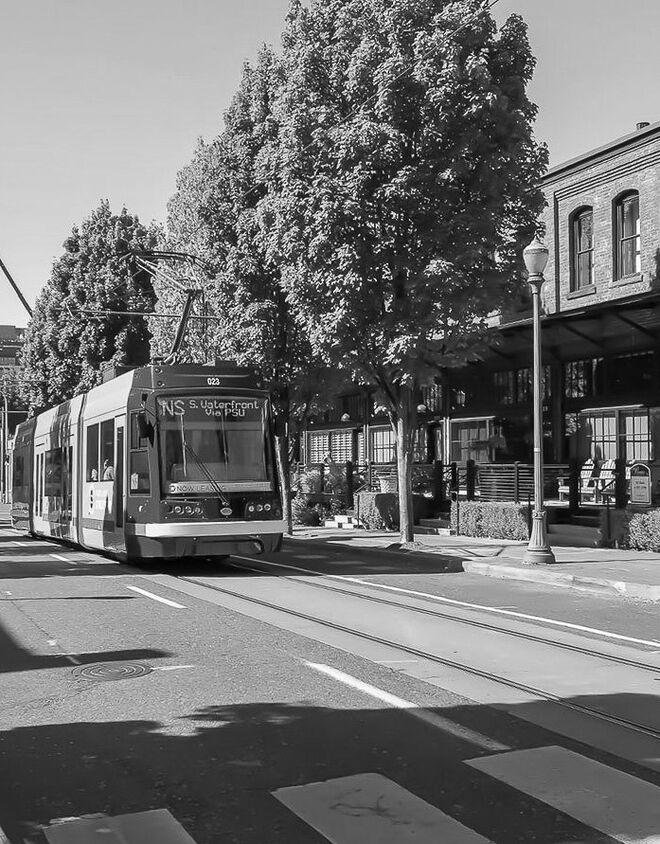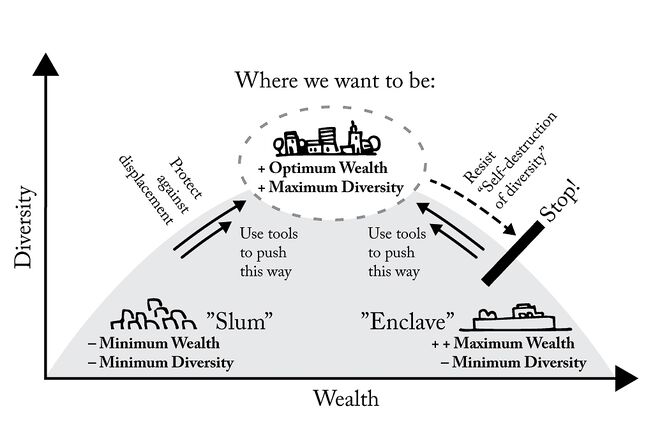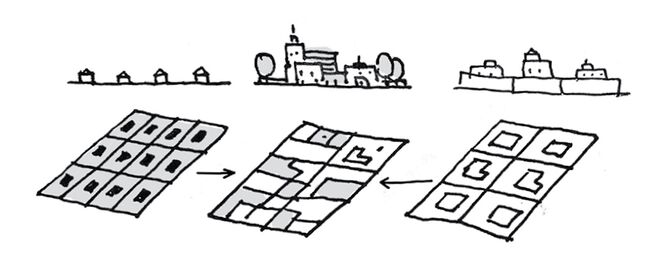13.3. Urban Regeneration
Aus Pattern Language Wiki
(Weitergeleitet von .../Urban Regeneration)
Within the Polycentric Region, the urban cores also represent a valuable asset for careful regeneration.
Problem-statement: There are many opportunities to re-urbanize existing declining urban areas. But care must be taken to avoid runaway gentrification.
Discussion: In her landmark The Death and Life of Great American Cities1, Jane Jacobs described the dangers of gentrification, but she also made an important point. The problem is not when the wealth of a neighborhood increases from poverty to a mix of incomes — a condition she called “unslumming”. The problem arises when the neighborhood tips over from there into higher income, driving out those of more moderate income. She called this “the self-destruction of diversity.” In other words, increasing wealth that increases diversity is good, but increasing wealth that decreases diversity is very bad — perhaps as bad as decreasing wealth that also decreases diversity (e.g. when a neighborhood declines into a slum).
Jacobs’ point could be illustrated with a graph (previous page), showing a kind of “Goldilocks zone” of maximum diversity. Our goal, not only as planners and designers, but also as policy leaders and citizens, is to implement policies and tools to resist the destruction of diversity on either side of the curve. In existing neighborhoods, our challenge is to restore diversity with policies that can recognize when “enough is enough.”
Therefore:
Implement policies to regenerate existing urban areas in decline, while also assuring that these areas do not tip over into gentrification. Do this by providing a range of new housing at a range of prices, and by expanding opportunities in many places at once, so that no one place becomes over-heated.
Promote a more equitable form of urban development with a Land Value Capture, Integrated Affordability, Multi-Family Infill, and other tools. …
¹ Jacobs, J. (1961). The Death and Life of Great American Cities. New York: Random House.
Mehaffy, M. et al. (2020). URBAN REGENERATION (pattern). In A New Pattern Language for Growing Regions. The Dalles: Sustasis Press. Available at https://pattern-language.wiki/.../Urban_Regeneration
SECTION I:
PATTERNS OF SCALE
1. REGIONAL PATTERNS
Define the large-scale spatial organization…
1.4. 400M THROUGH STREET NETWORK
2. URBAN PATTERNS
Establish essential urban characteristics…
3. STREET PATTERNS
Identify and allocate street types…
4. NEIGHBORHOOD PATTERNS
Define neighborhood-scale elements…
5. SPECIAL USE PATTERNS
Integrate unique urban elements with care…
6. PUBLIC SPACE PATTERNS
Establish the character of the crucial public realm…
7. BLOCK AND PLOT PATTERNS
Lay out the detailed structure of property lines…
8. STREETSCAPE PATTERNS
Configure the street as a welcoming place…
9. BUILDING PATTERNS
Lay out appropriate urban buildings…
10. BUILDING EDGE PATTERNS
Create interior and exterior connectivity…
10.1. INDOOR-OUTDOOR AMBIGUITY
SECTION II:
PATTERNS OF MULTIPLE SCALE
11. GEOMETRIC PATTERNS
Build in coherent geometries at all scales…
11.2. SMALL GROUPS OF ELEMENTS
12. AFFORDANCE PATTERNS
Build in user capacity to shape the environment…
13. RETROFIT PATTERNS
Revitalize and improve existing urban assets …
14. INFORMAL GROWTH PATTERNS
Accommodate “bottom-up” urban growth…
15. CONSTRUCTION PATTERNS
Use the building process to enrich the result…
SECTION III:
PATTERNS OF PROCESS
16. IMPLEMENTATION TOOL PATTERNS
Use tools to achieve successful results…
16.2. ENTITLEMENT STREAMLINING
16.3. NEIGHBORHOOD PLANNING CENTER
17. PROJECT ECONOMICS PATTERNS
Create flows of money that support urban quality…
17.4. ECONOMIES OF PLACE AND DIFFERENTIATION
18. PLACE GOVERNANCE PATTERNS
Processes for making and managing places…
18.3. PUBLIC-PRIVATE PLACE MANAGEMENT
19. AFFORDABILITY PATTERNS
Build in affordability for all incomes…
19.1. INTEGRATED AFFORDABILITY
20. NEW TECHNOLOGY PATTERNS
Integrate new systems without damaging old ones…
20.2. RESPONSIVE TRANSPORTATION NETWORK COMPANY


